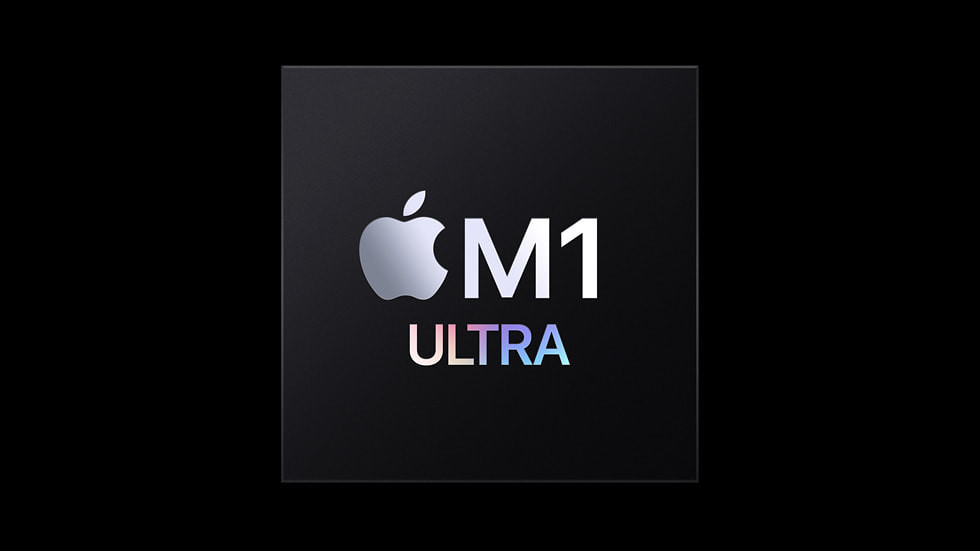Apple has revolutionized mobile computing with the introduction of the M1 processor in the Mac Mini, Macbook Air, and Macbook Pro in 2020. They were simple replacements though and nothing was changed on the units overall. This was taken to the next level when the M1 Pro and M1 Max was introduced with the new Macbook Pro in 2021. With this, everyone was left wondering when they will touch the Mac Pro line since it’s their most powerful aimed for professionals and studios. Well, we got our answer a few days ago.
M1 Ultra

Apple went mad scientist mode and connected 2 M1 Max chips into a single die. The result is the M1 Ultra with 116 billion transistors (the original M1 only had 16, while M1 Max at 57 billion), 20-core CPU, 64-core GPU, 32-core Neural engine, and up to 128GB of unified RAM. It sounds simple that 2 processors connected will of course, result in a more powerful one but the M1 prides itself in efficiency. Compared to a ‘16-core PC processor,’ the M1 Ultra uses 100w less power. Its discrete GPU unit can also do professional tasks like 3D rendering while using 200w less power than other discrete GPU in the market. So, who received such technology?
Mac Studio
Instead of going straight for the Mac Pro, Apple introduced a new bridge product called the Mac Studio. It’s like 3 Mac Minis stacked on top of the other but this one has a more robust cooling mechanism that takes up half of that vertical space, and a more attainable price point than a Mac Pro.

It starts at P117,990 with an M1 Max chip or P237,990 with the M1 Ultra (current Mac Pro starts at P359,990). Performance-wise, it is 2.5x faster with 3.4x better GPU performance than the 27-inch iMac with 10-core processor. What’s surprising is it trashes even the Intel Mac Pro by being 50% faster, 3x better GPU performance, and 3.7x faster when transcoding video – and these are just for the M1 Max. The figures only go higher when pitted against the Mac Studio with M1 Ultra.
Apple seemed to have realized the importance of ports once again as the Mac Studio has a lot of it. Infront are two USB-C ports that can be configured to Thunderbolt 4 capable if bought with M1 Ultra, while having an SDXC slot beside it. At the back, both models have 4 USB-C Thunderbolt 4 ports, 10GB Ethernet slot, 2x USB-A, an HDMI port, and a 3.5mm headphone jack.
Studio Display
6 years after they discontinued the Thunderbolt Display, Apple released the Studio Display alongside the Mac Studio. It has the same design as the latest iMac featuring squared-off sides, a new stand, pivot, and the magnetic power cable. It has an option for a height-adjustable stand with a counter-balancing arm and a VESA mount version.

The Apple Studio Display is basically an iMac without computing power. Infront is a 5K Retina display with 600 nits of brightness and configurable with Nano-texture glass for less reflections. It also retained the 12MP ultra-wide camera with Center Stage for automatic panning during video calls. There’s also a 6-speaker system, support for spatial audio, and studio quality three-mic array. At the back there’s 1 upstream USB-C Thunderbolt 3 port and 3 downstream USB-C ports.
Pricing for the Apple Studio Display starts at P94,990 with standard glass and only a tilt-adjustable stand. It’s a hefty sum but a far cry from the Pro Display XDR that starts at P299,990 for the standard glass only.
iPad Air now with M1
In a surprise move, Apple has put their laptop-class M1 processor from 2020 into the iPad Air and released it very early in the year. Usually the iPads are updated on the second half of the year, indicating that probably more surprises are in store for iPad fans this 2022.

As mentioned, the new iPad Air has the M1 processor resulting in 60% better performance, 2x better graphics, and the 16-core Neural engine delivering next-level experience in computing and gaming. It also got the 12MP front-facing camera with Center Stage while the USB-C was upgraded to 10Gbps capability. Cellular models also now get 5G capability, making the iPad Air a really light solution for working on the go.
The new iPad Air M1 still starts at P35,990 for the 64GB WiFi only model.
iPhone SE
Apple’s most attainable iPhone was also upgraded with significant features without additional bulk. It still has the rounded corners, vertical bezels, and the TouchID button below the Retina Display. Inside, it’s now 5G capable and powered by the A15 processor. This has a 5nm process meaning it will have more battery life than the previous SE even if you use 5G according to Apple.

Other changes include having 120fps in the front camera and there’s now 4GB of RAM instead of 3GB. The rear camera also got software boost thanks to the A15 processor. It’s now capable of Smart HDR 4, Photographic Styles, Deep Fusion, and Portrait mode while still being a single camera. All of this while still maintaining the same price of P28,990 for the 64GB model.
Green iPhones
Unlike in previous color updates by Apple, they’ve now included the Pro line in their color scheme. The iPhone 13 and 13 Mini are now available in green while the 13 Pro and Pro Max are in a shade called Alpine Green. Simply put the Alpine is a bit lighter than the standard green, but shades are very close.

All prices are according to the official Apple Philippines website. Local availability and pricing will differ per distributor or seller.












